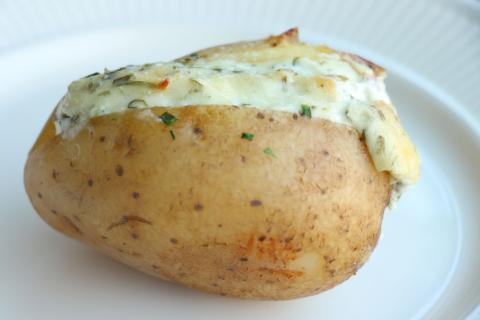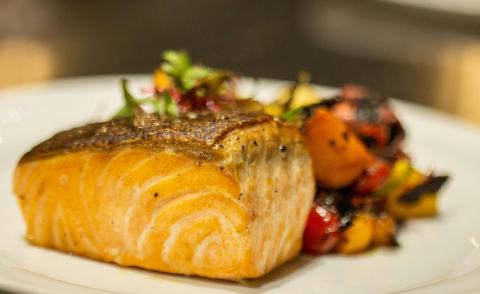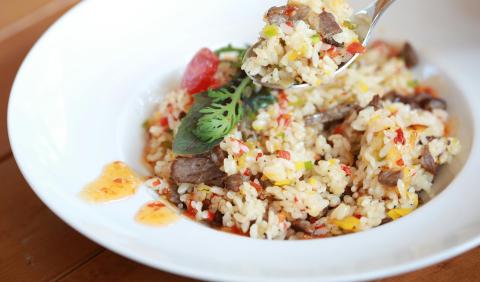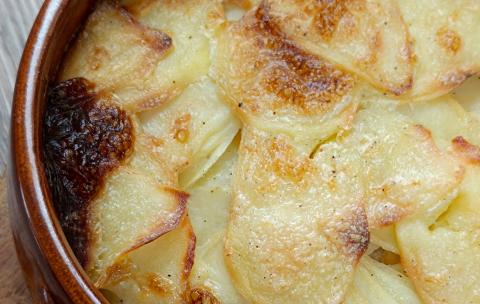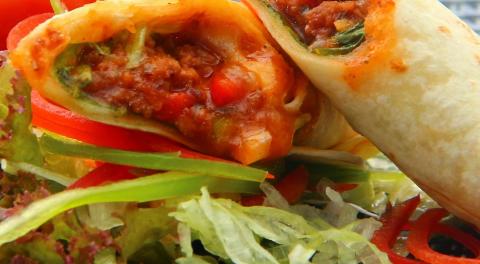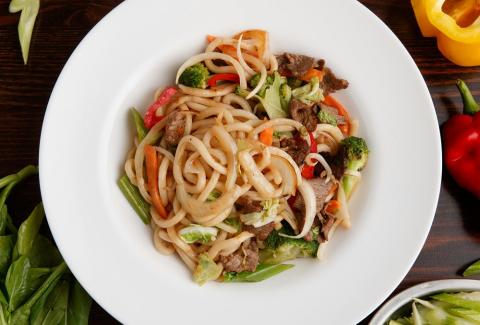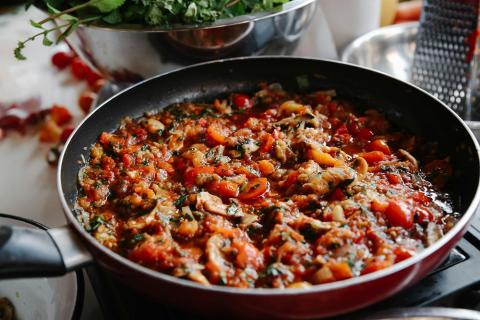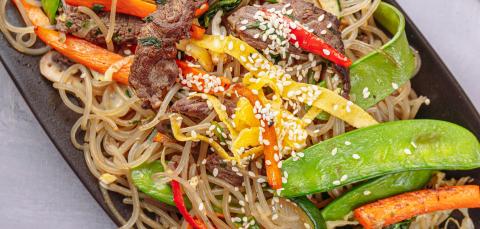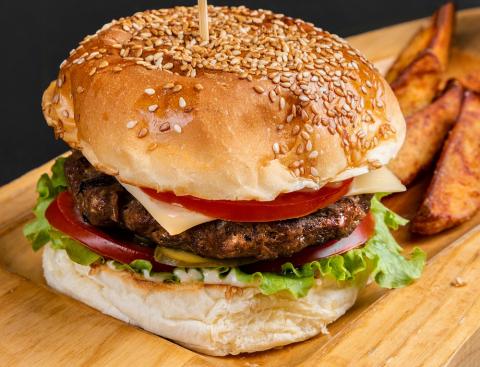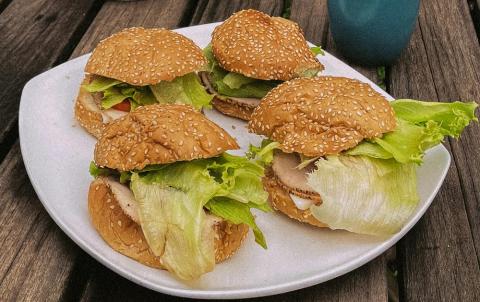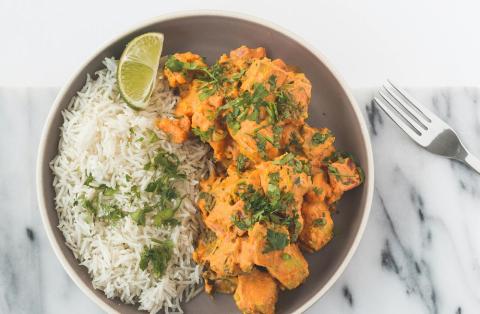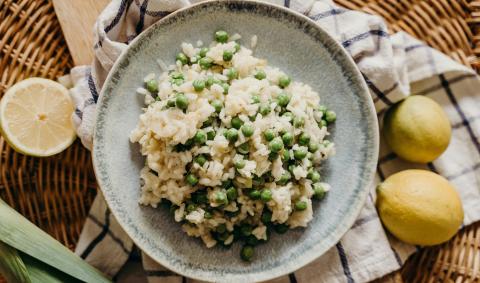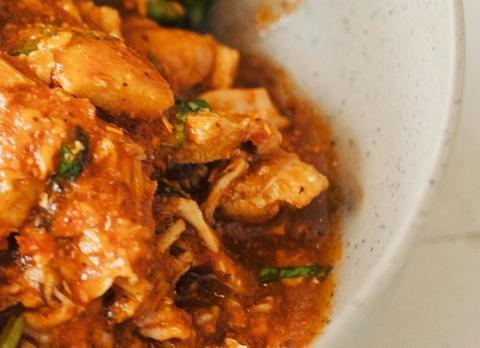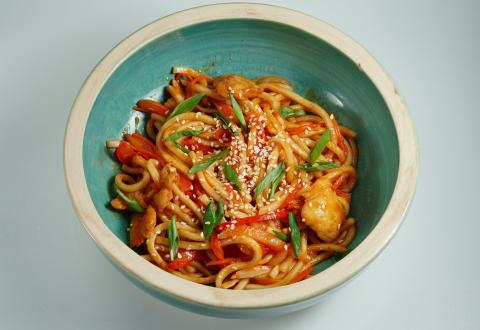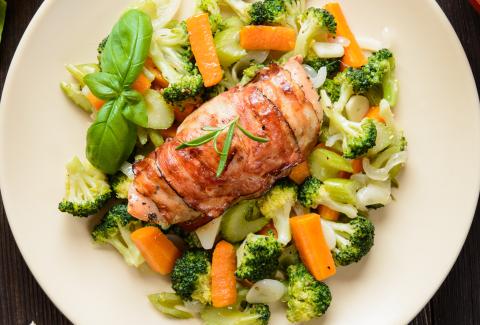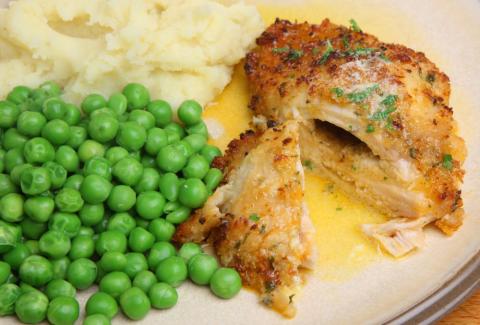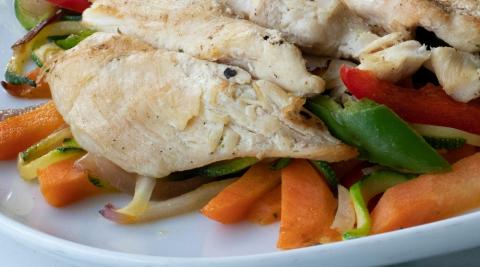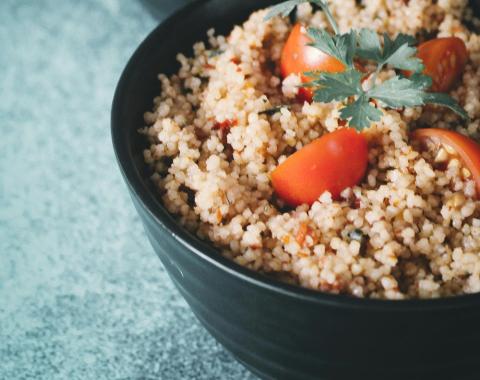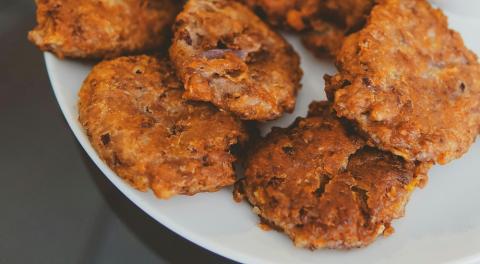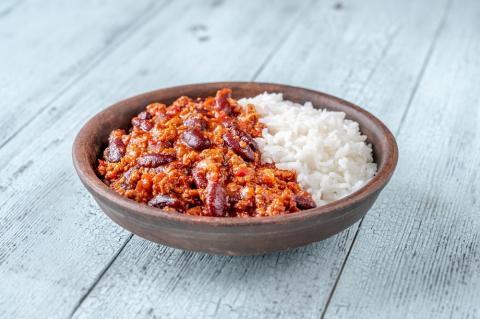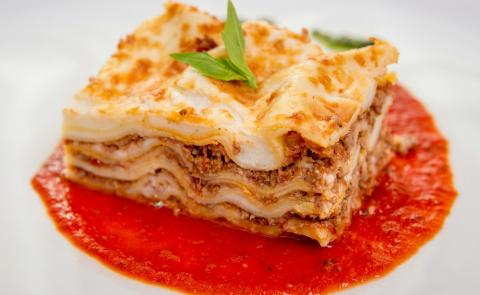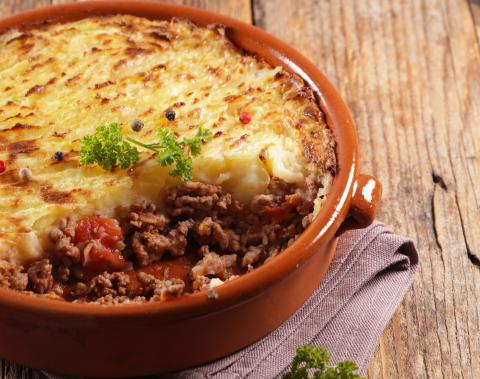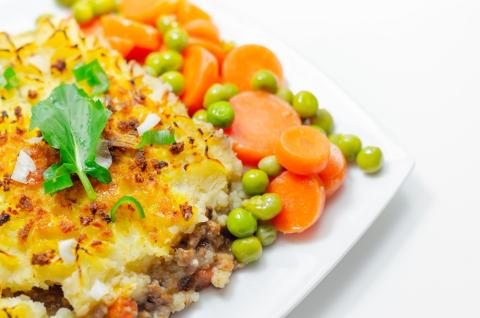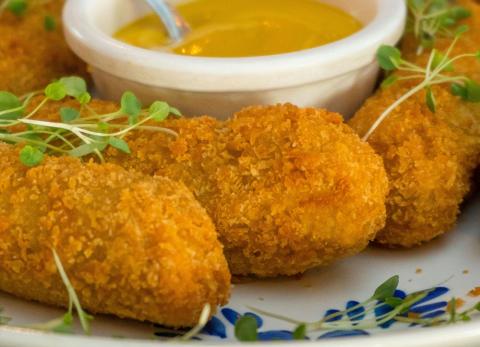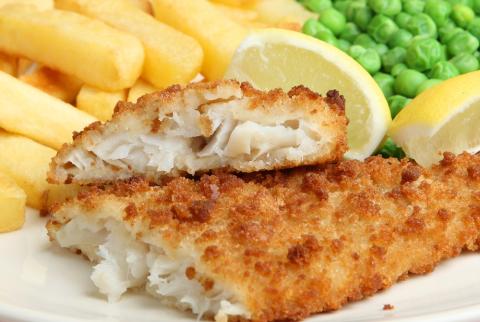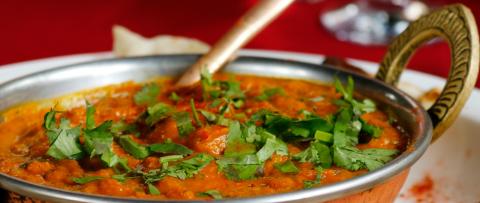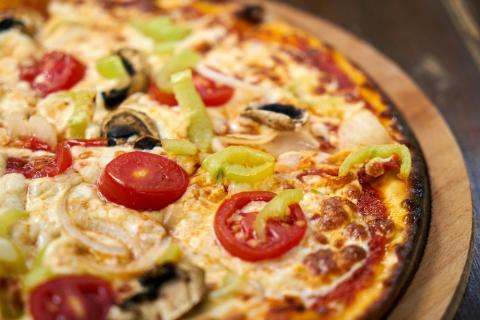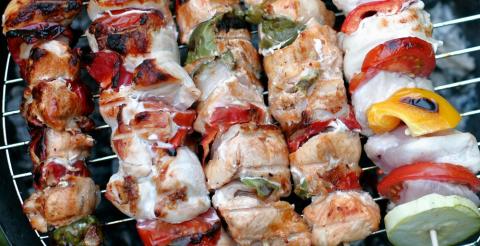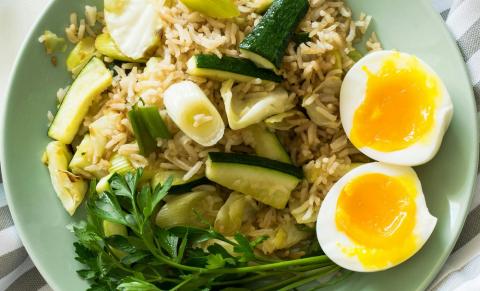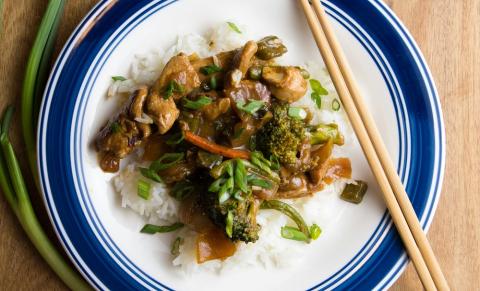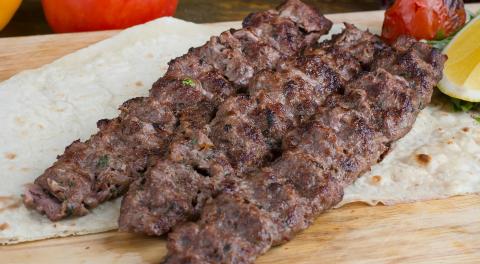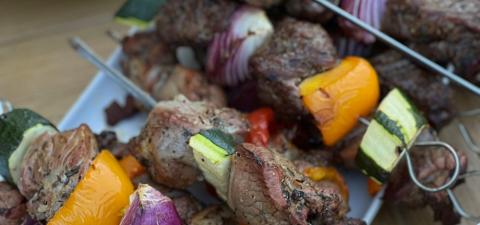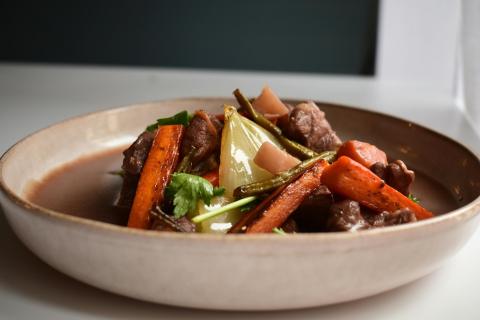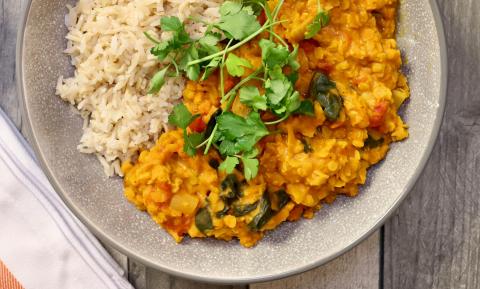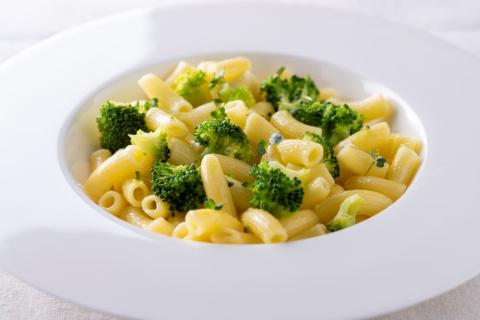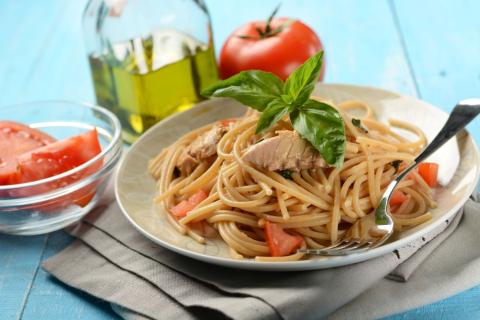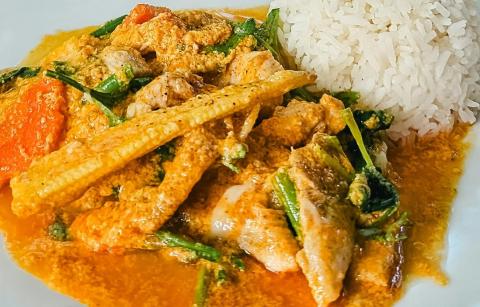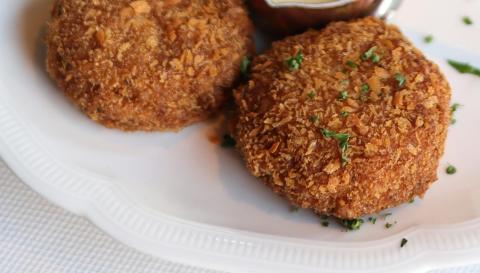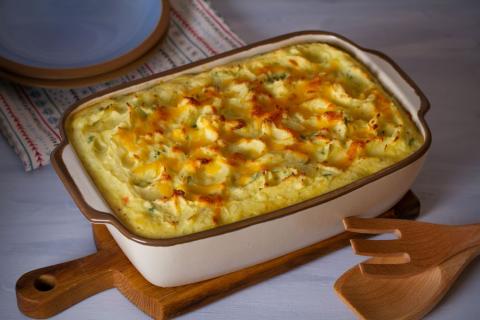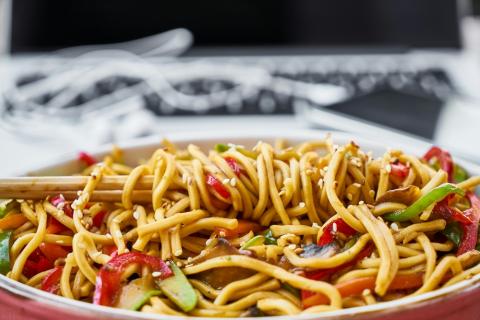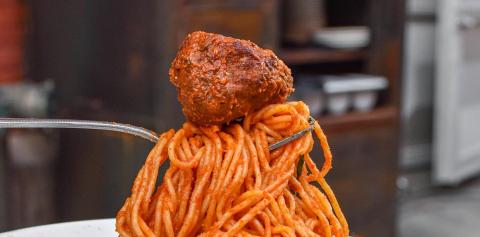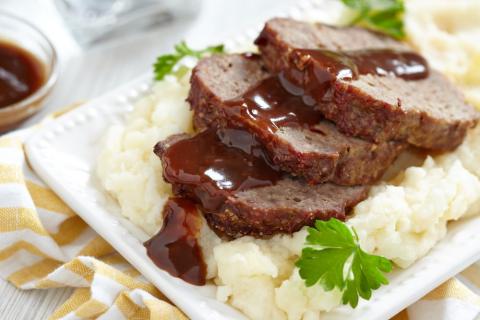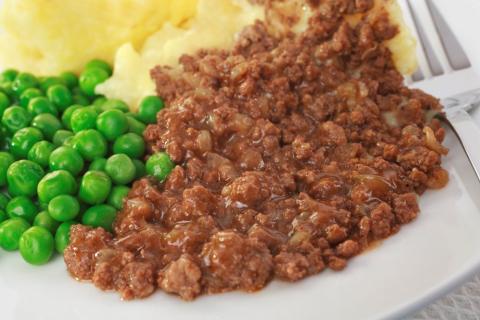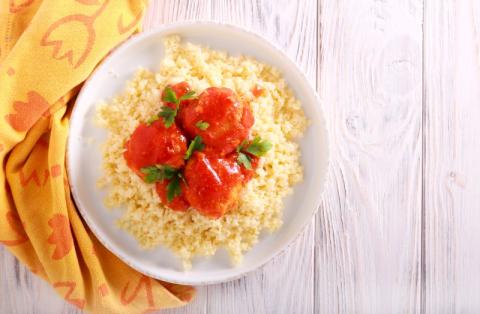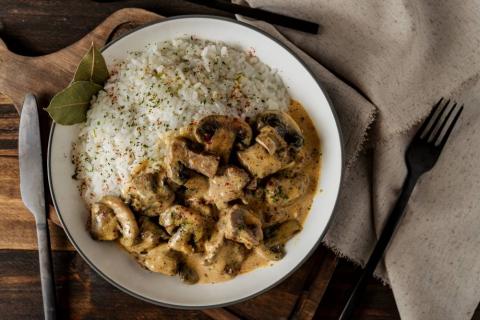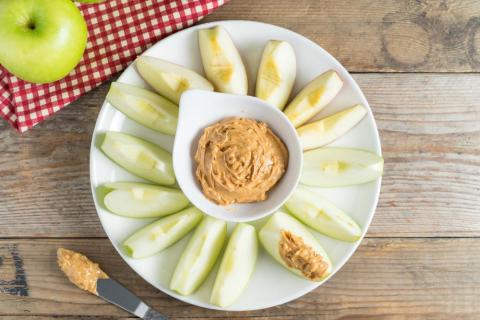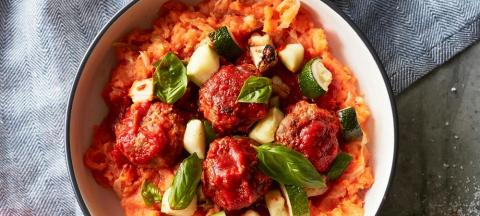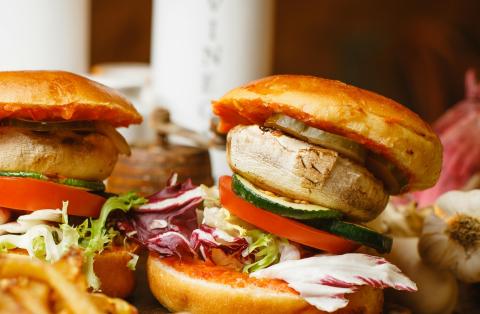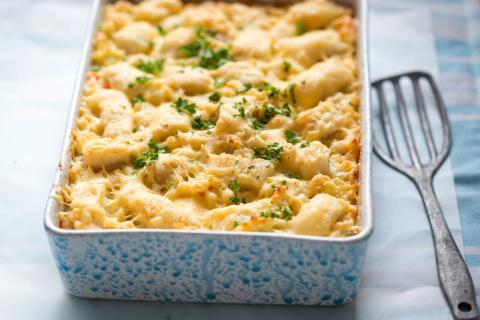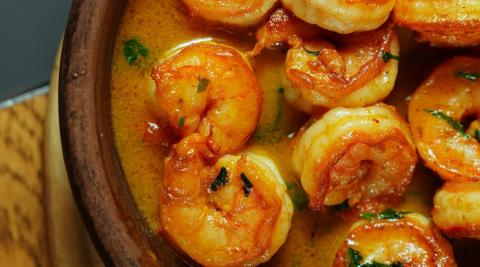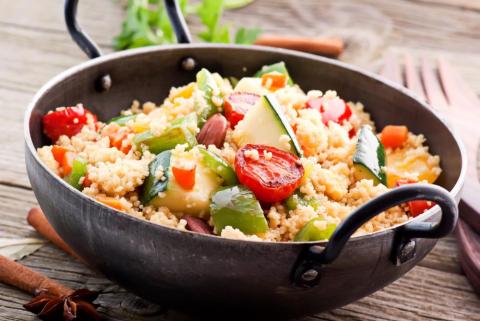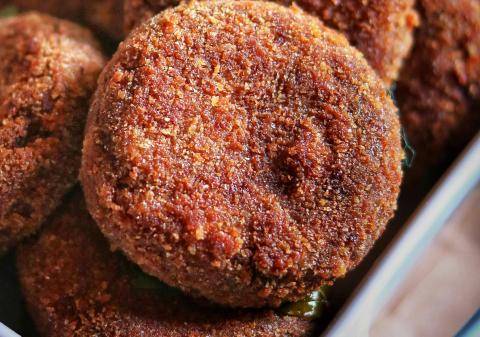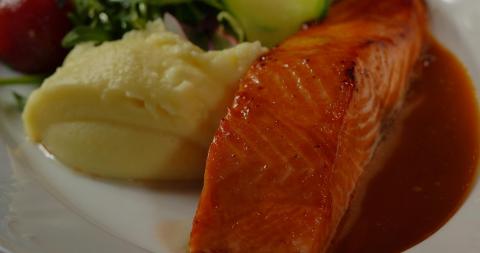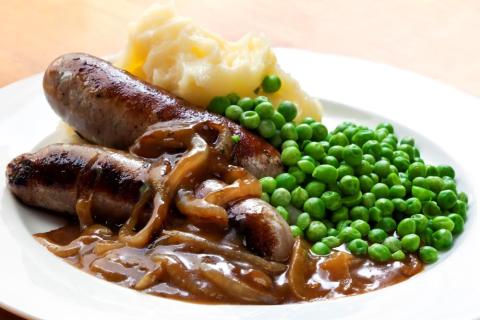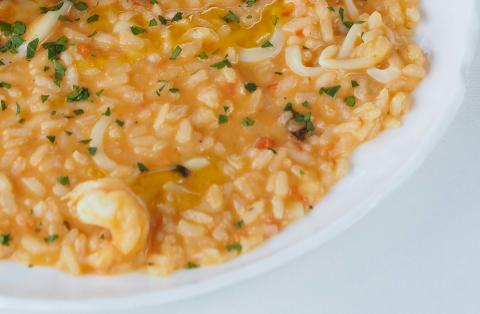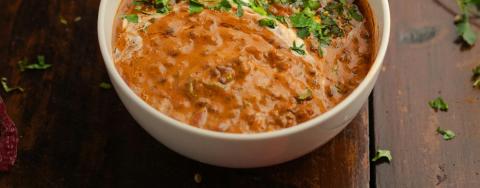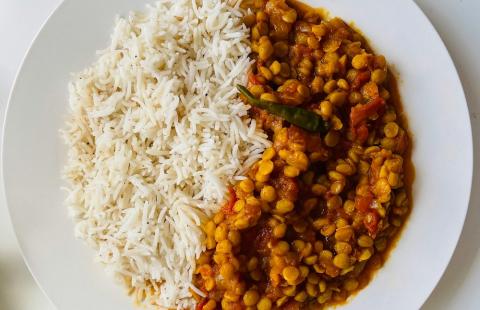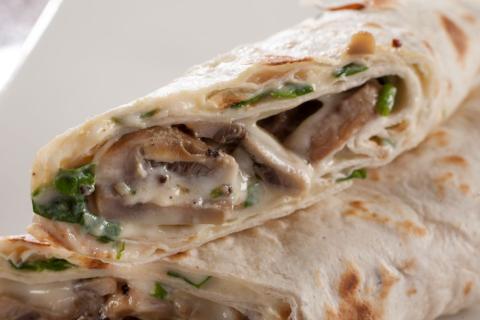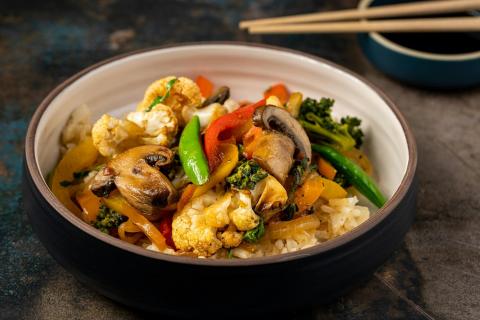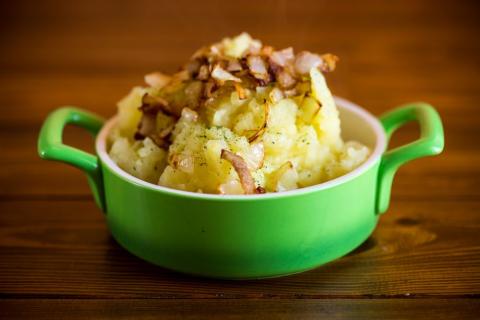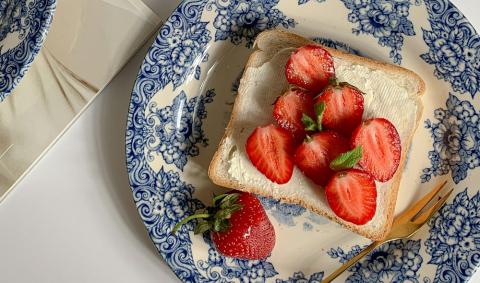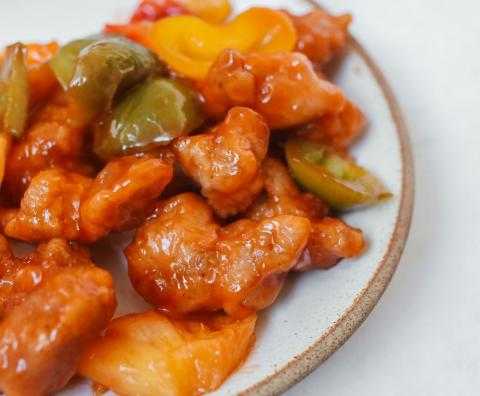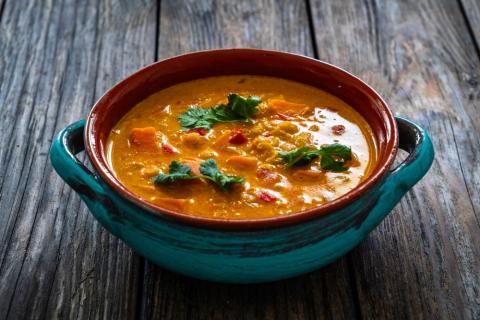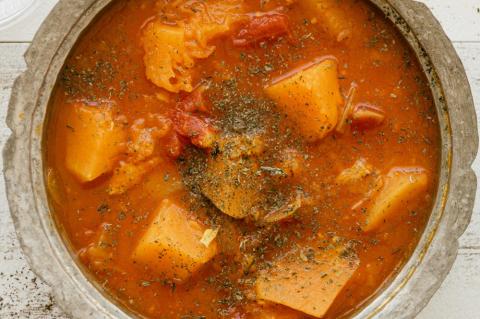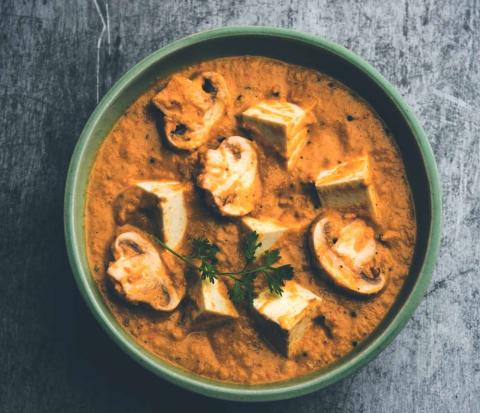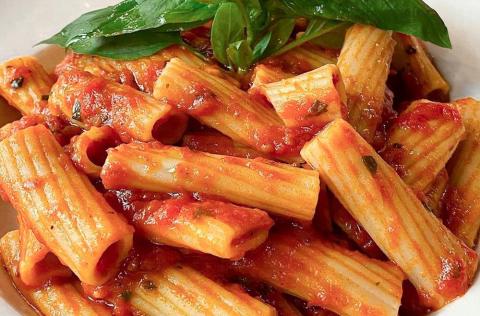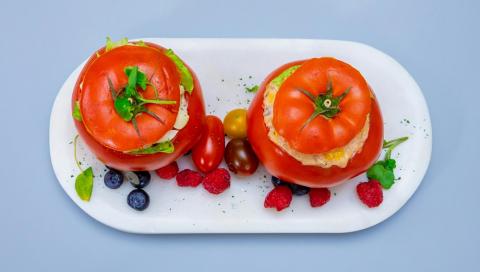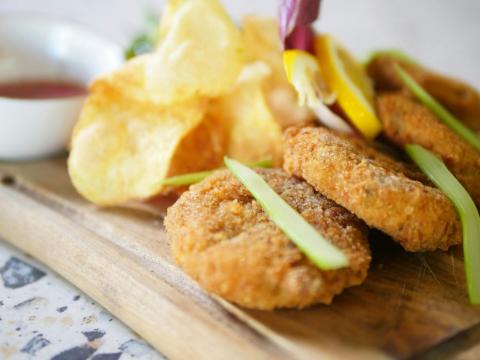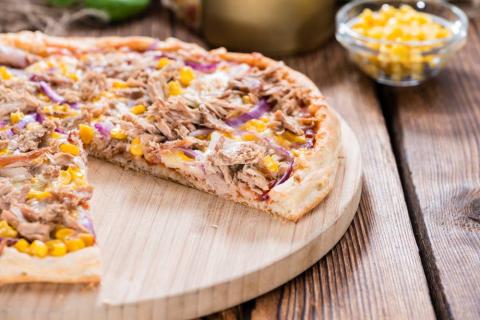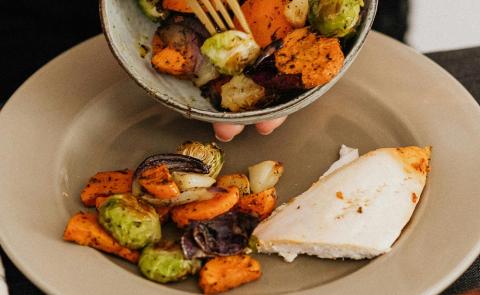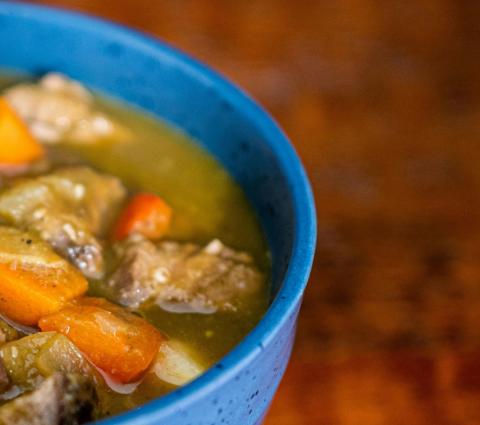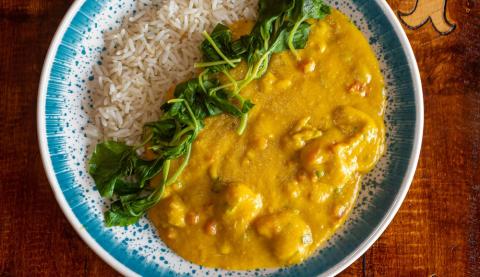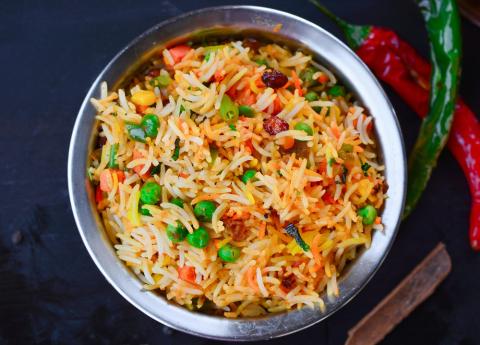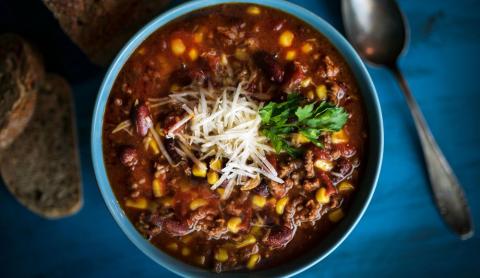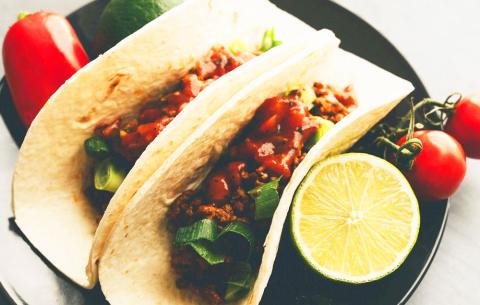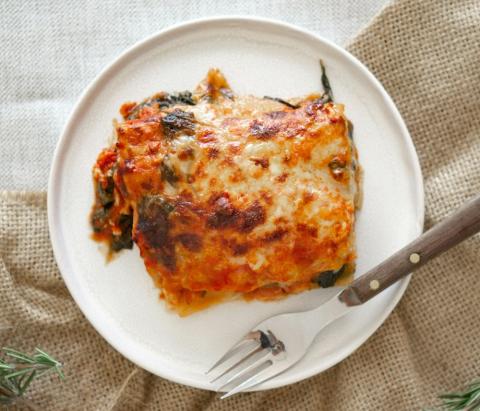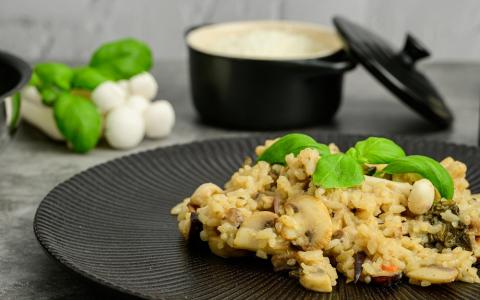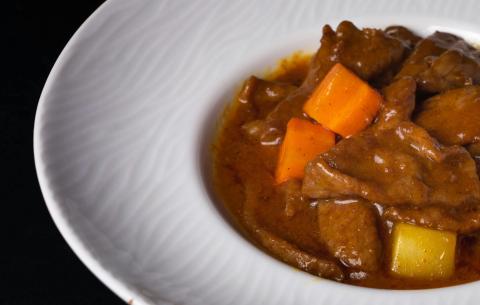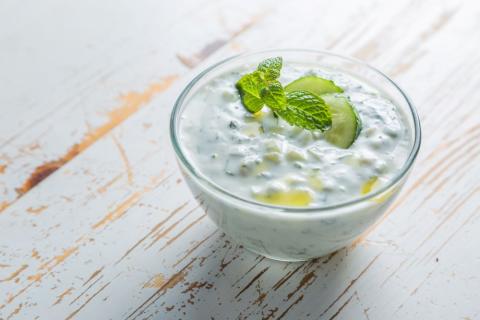- 1 (240g) Onion
- (90g) Curry Paste
- (750g) Frozen Mixed Vegetables
- 2 Pints (1L) Semi-Skimmed Milk
- 1 Mug (300g) White Rice
Ingredients
Allergy Disclaimer
Always check the label of each ingredient for allergy warnings.
Method
- Peel and finely dice the onion. Rinse the rive with cold water using a seive.
- In a large saucepan add the onion and curry paste and fry for approximately 5 minutes. Stir continuously to prevent the paste sticking and if necessary add a little water
- Add rice, vegetables and half of the milk to the pan, making sure the vegetables are covered. Bring to the boil and then simmer gently, approximately 20 minutes.
- Occasionally stir the biryani, adding milk as it is absorbed by the rice.
- It is ready to serve once the rice is soft to the bite. Add black pepper and coriander if desired.
Cost Saver Tips
Use any leftover vegetables.
Tips for Kids
Make with their favourite vegetables.
Nutritional Information
Based on a single serving of 566g (% of an adult's reference intake)
Energy
543 kcals ( 27 %)
2,298 kJ ( 27 %)
Fat
3.4 g ( 17 %)
Saturates
86 g ( %)
Sugar
23.7 g ( 26 %)
Salt
1.2 g ( 20 %)
Detailed nutritional information
| Per 100g | Per 566g serving | |
|---|---|---|
| Energy Kcals | 96 | 543 |
| Energy Kj | 406 | 2,298 |
| Protein | 4 g | 22.6 g |
| Total Fat | g | g |
| Saturated Fat | 0.6 g | 3.4 g |
| Carbohydrates | 15.2 g | 86 g |
| Total Sugars | 4.2 g | 23.7 g |
| NSP Fibre | 0.3 g | 1.7 g |
| Sodium | 86 mg | 487 mg |
| Salt | 0.2 g | 1.2 g |
Find out about nutritional labelling
Nutrition labels on the front of packaging
- Most of the big supermarkets and many food manufacturers display nutritional information on the front of pre-packed food.
- Front of pack nutrition labels provide information on the number of grams of fat, saturated fat, sugars and salt and the amount of energy (in kJ and kcal) in a serving or portion of a recipe.
- The labels also include information about reference intakes (expressed as a percentage) which are guidelines about the approximate amount of particular nutrients and energy required for a healthy diet.
- The colour coding tells you at a glance if the food has high (red), medium (amber) or low (green) amounts of fat, saturated fat, sugars and salt.
- The more greens on the label, the healthier the choice
- Amber means neither high nor low, so you can eat foods with all or mostly ambers on the label most of the time.
- Reds on the label means the food is high in that nutrient and these are the foods we should cut down on. Try to eat these foods less often and in small amounts.
Food shopping tips
If you’re trying to decide which product to choose, check to see if there's a nutrition label on the front of the pack. This will help you to quickly assess how your choices stack up. You will often find a mixture of red, amber and green colour coding for the nutrients. So when you're choosing between similar products, try to go for more greens and ambers and fewer reds if you want to make a healthier choice.
 Activities & Play
Activities & Play Behaviour
Behaviour Childcare
Childcare Development & Growing Up
Development & Growing Up Family, Friends & Relationships
Family, Friends & Relationships Feeding Your Baby
Feeding Your Baby Food & Eating
Food & Eating Health & Safety
Health & Safety Mental Health & Wellbeing
Mental Health & Wellbeing Money & Work
Money & Work Online Behaviour & Safety
Online Behaviour & Safety Pregnancy & First Days
Pregnancy & First Days School & Education
School & Education Sleep
Sleep


